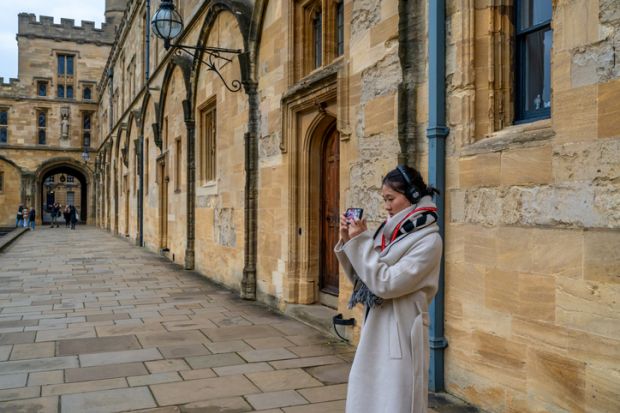A record number of black and ethnic minority students were admitted into the University of Oxford last year, figures show.
However, non-white applicants still have significantly lower success rates and offer rates than their white classmates.
The university’s latest admissions report shows that about 2,500 UK students were accepted for the 2023-24 academic year – of which 28.8 per cent identified as black, Asian, mixed heritage, Arab or any other ethnicity except white (BME).
This was up from 27.8 per cent the year before, and almost double the proportion admitted in 2015.
But young people from black and ethnic minority backgrounds made up a much higher proportion (35.6 per cent) of all applicants and have lower chances of getting into Oxford.
Of them, 16.9 per cent received an offer, and 14.5 per cent were accepted. This is compared with 22 per cent and 19.7 per cent for white students, respectively.
Census data shows that 23.6 per cent of young people aged 19 to 25 were black and minority ethnic across England and Wales in 2021.
Shadow cabinet member David Lammy has previously accused Oxford of “unconscious bias” in its admissions policy.
The report highlights that students from BME backgrounds are more likely to apply for the most competitive courses than white students.
For example, between 2021 and 2023, 38.5 per cent of applications from UK-domiciled students with black African or black Caribbean heritage were for just two courses, medicine and law, compared with just 13.3 per cent of applications from white students.
As a result, more than half (50.5 per cent) of the 2021-23 intake for Oxford medicine are BME students. In contrast, about 15 per cent of modern languages and biomedical sciences students are non-white.
Campus resource collection: Being Black in the academy
Just as was the case at the University of Cambridge, the admissions report showed that the proportion of state school pupils accepted into Oxford fell slightly, to 67.6 per cent last year.
This was the third successive annual decrease from a peak of 68.6 per cent in 2020, although it remains well above the level seen in 2019.
Because of a high number of applications, the success rate for state schools dropped to just 16.4 per cent, which was the lowest level for at least a decade.
Oxford also accepted fewer female students in 2023, with the percentage of intake falling to 52.2 per cent and the lowest since 2018.
Meanwhile, the institution’s postgraduate statistics show an increasing number of older students from outside the European Union.
Of the approximately 6,000 postgraduate students admitted in 2023, 37.9 per cent were from the UK, 12 per cent from the EU, and 50.1 per cent from outside the EU.
The number of non-EU students has crossed 50 per cent for the first time, while the number from inside the bloc has halved since 2018.
Register to continue
Why register?
- Registration is free and only takes a moment
- Once registered, you can read 3 articles a month
- Sign up for our newsletter
Subscribe
Or subscribe for unlimited access to:
- Unlimited access to news, views, insights & reviews
- Digital editions
- Digital access to THE’s university and college rankings analysis
Already registered or a current subscriber? Login








